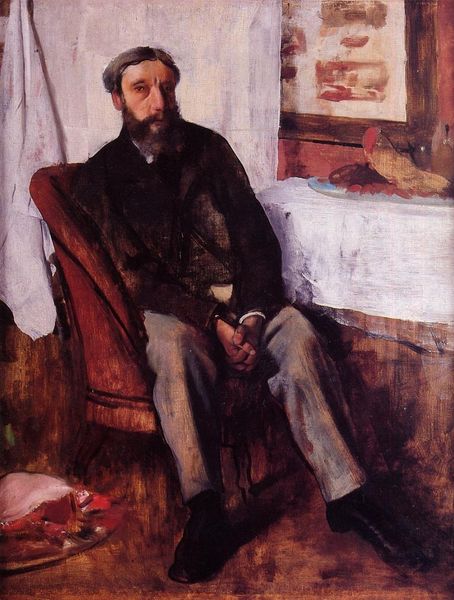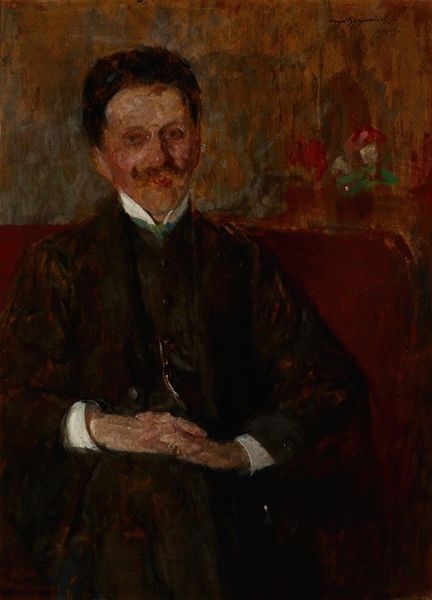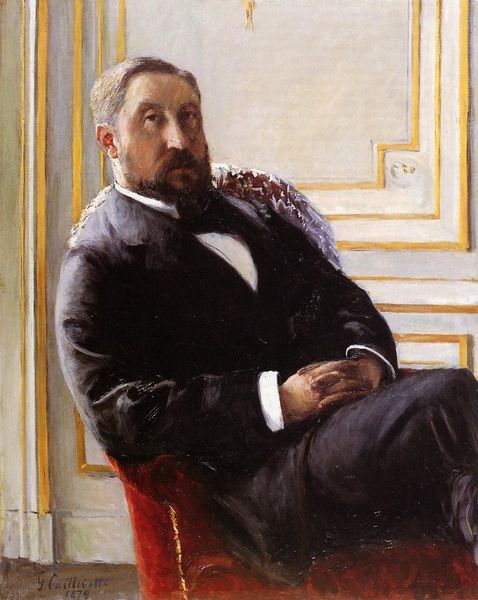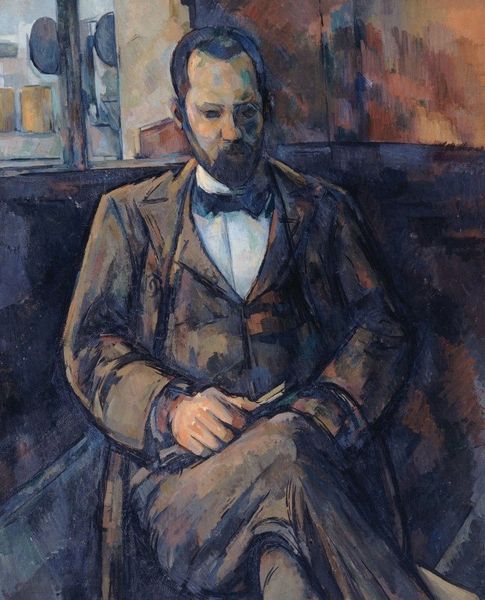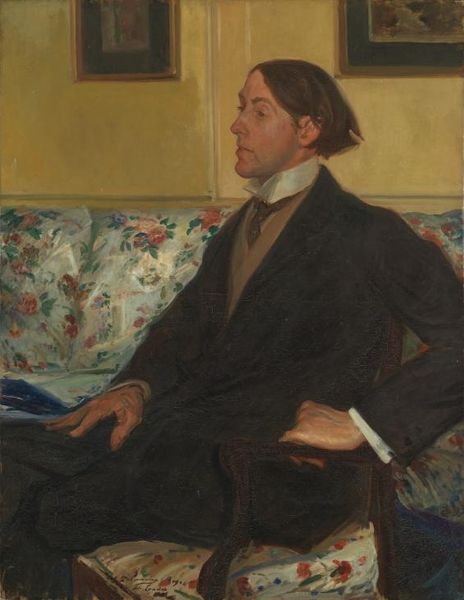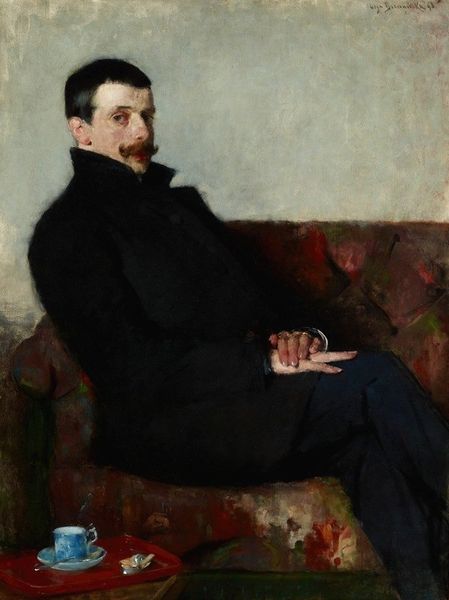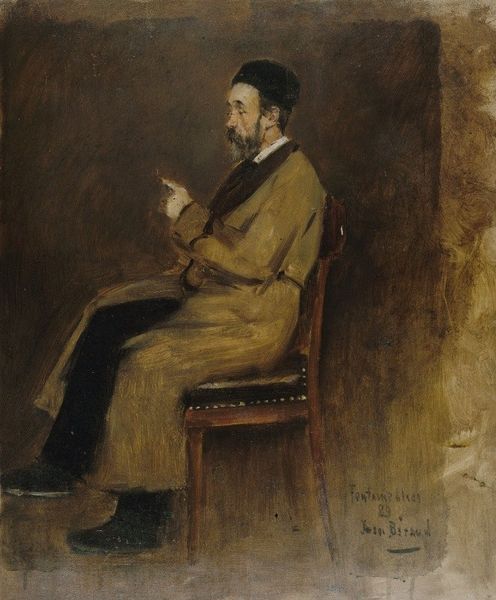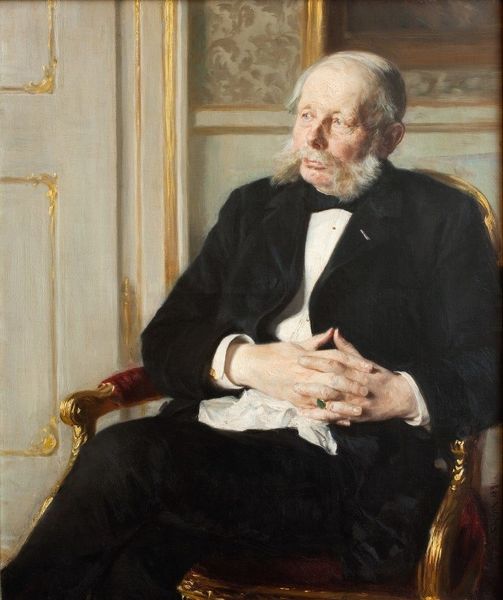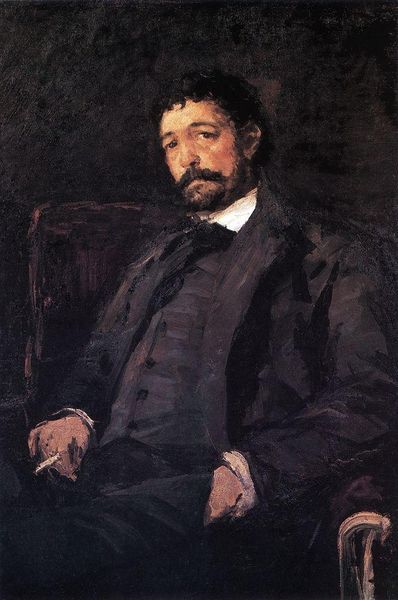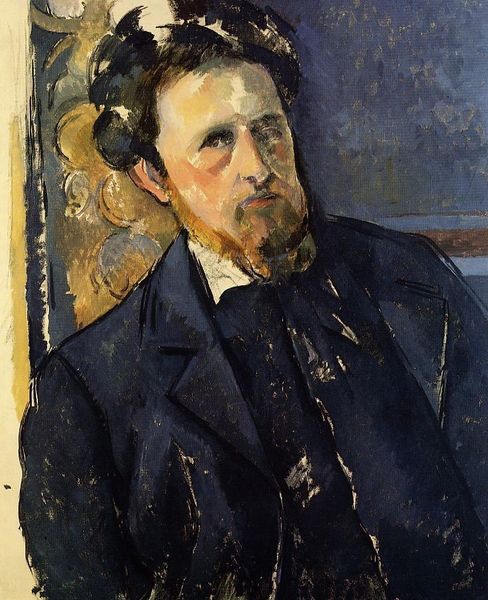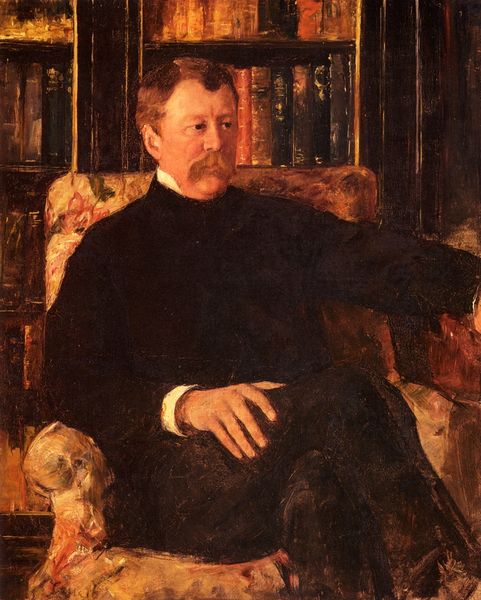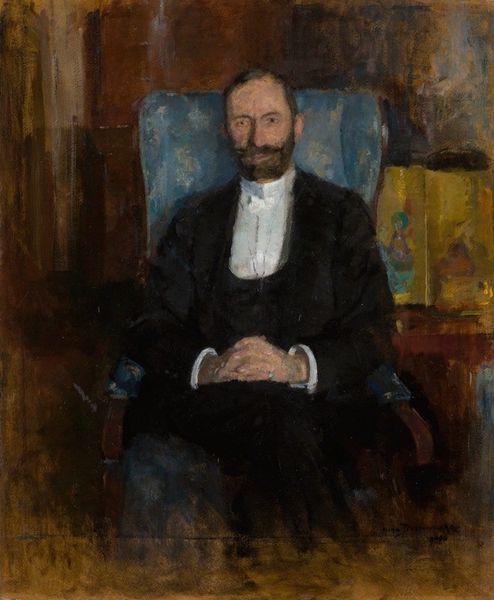
oil-paint
#
portrait
#
figurative
#
portrait
#
impressionism
#
oil-paint
#
portrait subject
#
figuration
#
oil painting
#
portrait reference
#
portrait head and shoulder
#
portrait drawing
#
genre-painting
#
facial portrait
#
portrait art
#
modernism
#
fine art portrait
#
realism
#
digital portrait
Copyright: Public Domain: Artvee
Editor: Here we have Gustave Caillebotte's "Portrait of a Man," painted around 1880, using oil on canvas. The sitter appears contemplative, gazing out of what I presume is a window. It has such a feeling of quiet intimacy; what are your thoughts when you look at it? Curator: This painting, like much of Caillebotte’s work, provides a fascinating lens through which to view the evolving role of the bourgeoisie in late 19th-century Paris. Notice how he is positioned—indoors, observing, but somewhat removed from the exterior world. Who do you think this man could be? Editor: He seems like he’s part of the upper class. The tailored suit, the ornate window…everything suggests a certain level of comfort and privilege. Curator: Precisely! Caillebotte, himself a man of considerable wealth, often depicted scenes from his own social sphere. His work, therefore, served as a sort of visual record. It subtly investigates the evolving codes of conduct within that world. Does the fact that Caillebotte was a wealthy man influence your viewing of the artwork? Editor: Definitely! Knowing he belonged to that class makes me think about how he chose to represent it. Is he celebrating it, critiquing it, or just documenting it? The subject's quiet gaze almost suggests a sense of ennui. Curator: It's a complicated mix, I think. Consider the Impressionists' fascination with depicting modern life, including leisure activities. Yet, Caillebotte also inserts this quiet psychological depth, making it less a simple snapshot and more a commentary. The institutional power of portraiture historically was often about idealization. Caillebotte seems interested in something else. Editor: I see what you mean. So it’s less about simply capturing a likeness and more about saying something about the subject's place in society and perhaps even the artist’s own. I'll have to look at Caillebotte differently now! Curator: Absolutely, and that's part of what makes his work so compelling. It reflects a specific time and social stratum but prompts us to question those constructs, too.
Comments
No comments
Be the first to comment and join the conversation on the ultimate creative platform.
